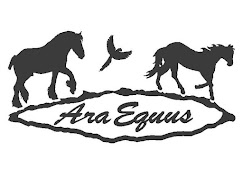A History of Curling in Belleville And of The Quinte Curling Club
By : Paul Henderson
Assisted by: Tim Bakonyi, Kathryn Brown, Heather Henderson, Goldie Livingston, Mary Livingston and Bill Riley
A History of Curling in Belleville and of the Quinte Curling Club
I. Curling in Belleville from the Early Stages until the 1920’s
The formation of the original curling club in Belleville occurred 60 years after the 1807 opening of the very first curling club in Canada, The Royal Montreal Club, established after Scottish curlers introduced the sport to Lower Canada.
The club in Belleville was formed in the year of Confederation on December 16, 1867, at a meeting held in the facilities of the Ontario Skating Rink. The name of the new club was The Belleville Curling Club, with the following officers named for the inaugural season:
President: James Brown
Secretary and Treasurer: Walter J. Haywald
Managing Committee: Andrew Thompson
Directors: James Blackwood, D. B. Robertson, Thomas MacNider,
Alex Robertson, Rev. W. Fox, Rev. A. Walker
The rink was attached to the skating rink, but due to building and refrigeration equipment limitations, it was difficult to have curling ice available until late fall. Back in 1868, at the end of November, two sheets of ice were laid out on the edge of the Moira River where curlers were able to pursue the game under less than ideal conditions.
In 1868 Belleville was one of 16 clubs curling in the Canadian Branch of The Grand Caledonian Curling Club, which in 1874 became The Royal Caledonia CC.
Initially, curling was a sport played predominantly by men. However, by the 1890's, women were participating as well, and had their own division by the 1913/14 season. They were part of The Ladies Ontario Curling Association which consisted of four clubs registered in Ontario: Belleville, Kingston, Peterborough and Toronto. The LOCA instituted an annual competition, the Tankard Trophy, which Belleville ladies subsequently won in both 1915 and 1916. Skips were Mrs. O. A. Marshall and Mrs. W. C. Mikels.
In 1911, a new curling rink was constructed at 158 George Street; it extended back to Turnbull Street. This was a galvanized metal structure, which included a spacious clubhouse and locker room. The cost of the actual structure was $6,290.00 with annual taxes of $31.59. The facility was active until the 1920's, when it fell upon hard times. Some 20 years later it was dismantled and removed by the City of Belleville.
Back in the early days of curling, curling stones were unmatched and each player owned a pair. When it came time to visit another city, the stones were loaded onto a sleigh, hauled to the station and transferred again at the other end. During transportation, the stones would absorb heat and it would be necessary to delay the start of the game until the stones cooled to ice temperature.
II. The Quinte Curling Club 1950’s
During the early 1950's there was an attempt to revive curling in the City of Belleville. A meeting at City Hall organized by Claude Tice actually resulted in the formation of a club, but the drive behind the effort eventually subsided.
By 1956, enthusiasm for the formation of a new club was once more at a high level and a meeting was again convened at city hall. The forming members present were Don MacKinnon, Pat Houston, Jerry Jarrett, Bill Gault, Steve Flintoff and Claude Tice. Before the meeting was over, most attendees pledged from $100 to $500. Debentures and a loan from the Bank of Montreal raised the balance required.
Arrangements were made with the city for a 75 year lease on land in the Fair Grounds at 246 Bridge Street West, with the provision that the Fair Board be granted use of the building each year for the Fall Fair. Supplementary Letters Patent were issued by the Province of Ontario to the new organization, The Quinte Curling Club Incorporated, on April 15, 1957.
In early 1957, building plans were engineered and prepared by Ernie Jones. The rink included seven laminated trusses to carry the full weight of the roof, giving a clear span over the ice area. The original building included the bare necessities, with the rink allowing for four sheets of ice in an area of 60 feet by 160 feet. The upstairs lounge included a viewing area and a kitchenette, with locker rooms and washrooms being located on the lower level. Also on this level was the clandestine “If” room where games were re-hashed over a variety of beverages. While the building was being constructed, QCC games were played at CFB Trenton.
To complete the building, the ice area was leveled, and miles of pipe were laid to carry the brine from the refrigeration equipment. These pipes were then covered with sand and frozen. Cost of the entire structure was $74,826.00, financed primarily through the sale of 264 $100 Class “B” debentures, an $18,000.00 bank loan and series “A” 5% debentures totaling $17,000.00.
Unfortunately an underground stream was later discovered crossing diagonally under the ice surface. This resulted in frost penetration and led to the cracking and heaving of the ice. The problem continued even after a concrete floor had been installed. Ultimately, the problem was solved by the placement of a 3 ¼ inch urethane foam insulation and a new concrete floor that has since provided the club with a stable ice pad. At a cost of $2,080.00, sixty-four new stones for the club were shipped in from the Isle of Ailsa Craig, Scotland, with all pairs matched.
The official opening of the Quinte Curling Club took place on February 15, 1958, with an invitational bonspiel and ceremonies. The first rock was thrown by Mayor Gerald Hyde, assisted by Bill Gault, Steve Flintoff and Pat Houston. The new club had 237 male members who paid an annual membership fee of $30.00 each and 147 ladies who paid $8.00. Only wives of male members were allowed to curl.
The first board members were:
President: Bill Gault
Vice President: Don McNevin
Secretary: Don McKinnon
Treasurer: Jerry Jarrett
Directors: Jack McArthur, Pat Houston, C. B. Colling, J. W. Deacon
L. E. McLean, R. Farquharson, L. Sheppard, Don Stanton, W. N. Hurst, J. Yanover
On January 23, 1958 a meeting chaired by Mary Colling was held to form a Ladies Section. First officers were:
President: Mary Colling
Vice President: Sunny McArthur
Secretary: Nina Gault
Treasurer: Bobs Jarrett
Because so many of the original members were new curlers, the famous Garnet Campbell of Saskatchewan was brought in to give three days of instructions in November of 1958. Initially all jobs including installation of ice were done by volunteer club members.
Founding and Charter Member Bill Gault went on to become president again in the second year of operation and continued on the board for ten years during which time he was also OCA rep. He was awarded a Life Membership in 1968 while his wife Nina was given one in 1990. Original director Pat Houston also went on to be president in the 1959-60 season.
III. The 1960’s
In the early 1960’s major activities included attempts to erase the debt. The Bank of Montreal loan was retired, notes were returned to 25 members and a $100.00 initiation fee was introduced to replace the original Class “B” debentures which became non-refundable.
It was at the end of the 1950’s and the beginning of the 1960’s that two people quietly began an involvement with the QCC that would ultimately result in the greatest contribution that any couple has given to the club for 50 consecutive years. Goldie and Mary Livingston were original club members and are still active curlers 50 years later, having both been granted Life Memberships in the 1996-97 season in recognition of their dedication to QCC.
Although many of Goldie’s and Mary’s activities were conducted behind the scenes, they were instrumental in making the kitchen the success it became by contributing heavily to it right from the start. From their store on West Moira, Wright’s Food Market, they would figure out the appropriate quantities of food required for the specific function. Then, because the kitchen in its early days did not have the capacity to prepare for large numbers, Mary’s mother would cook the meat at her home, and Goldie would deliver it to the club, slice and serve it. The club could also phone the store for needed items at a moment’s notice.
As a result of their close association with the kitchen, the Livingstons were able to inform convenors what was needed and, consequently, the kitchen worked more effectively. In addition, Mary compiled all of this information in a book which, with periodic modifications by her, became the original kitchen book kept at the club. They also advised on purchases of kitchen equipment and appliances from time to time.
Over the 50 years, however, the contributions of this couple have not been limited to the kitchen. As well as being members of numerous committees, Mary served on the Ladies’ Section from 1962 to 1967 and Goldie served on the Board of Directors from 1964 to 1970. Mary was Ladies’ President in the 1967-66 season and Goldie was club President in 1968-69.
Finally, Goldie and Mary are recognized as our unofficial club archivists. They have a collection of newspaper clippings, memorabilia and every club directory ever published. Mary also keeps a diary of club activities and keeps members informed on the passing of former members. They truly have been a preeminent couple for QCC’s first 50 years.
In curling, a controversial rating system based on ability replaced seniority as the method of determining positions curlers would play in club games. At the competitive level, a QCC team finished second to Orillia in the 1961 Provincial Tankards. Coming within one win of representing Ontario in the Brier were lead Al McCullam, second Tom Carruthers, third Bill Riley and skip Mac White.
In 1962 the Bay of Quinte Men’s and Bay of Quinte Mixed bonspiels hosted by QCC, CFB Trenton and Trenton CC were introduced. The winner of the inaugural event was Bill Lewis of CFB. He defeated the Quinte rink of Mac White, Dave Brown, Jim Coverdale and Corky McCorquodale which then went on to win the Elliot Motors event. The first QCC rink to take the Bay of Quinte Shield included Mac and Corky along with Al McCullam and Ron Benn. Then in 1968 Murray Johnson, Dave Brown, Jim Petticrew and Al Shukster took the main event. Dave Livingston skipped a team which included his father Goldie that won back to back titles in 1981 and 1982. This spiel involved up to 96 teams at its peak and required the use of Brighton CC to accommodate all the participants.
Although a motion to give the women members more input into the operation of the club was defeated, the Ladies Section made significant contributions from 1963 to 1966. They purchased appliances, fans, lights, wiring, cutlery and dishes for the kitchen. They also donated chairs, tables and a piano to the club.
On the curling side, in 1964 a Quinte team took the Rose Bowl, emblematic of the Ontario Mixed Championship. Members of the winning team were Heather White, Ron Benn, Agnes Benn and skip Mac White.
To de-emphasize the importance of prizes in bonspiels and to put curling on a more social level, the Men’s Sportsmen Bonspiel was introduced in January of 1962. For the Friday night and Saturday women were excluded from the club and the bonspiel committee provided all the food and entertainment. Among the first Sportsmen organizers were Ev Black, Corky, Bob Lanning, Doug Ashley, Bill Beattie and Jim Loynes. After a brief absence this very popular spiel was resurrected and continues to this day.
As the club entered its Centennial year (1967) and the tenth year in its new location, a centennial pin was designed and three projects were undertaken. A new drainage system was constructed along the north wall, club rooms were completely redecorated and new stair carpeting was installed. Membership figures for the 1966-1967 season were: men 171, ladies 125, juniors 70, School for the Deaf 33, Albert College 22. Also in this year, the team of Marlene and Bill Henderson, along with Kathryn and David Brown, went to the Provincial Mixed Finals.
The last part of the decade saw several accomplishments. Our lease with the city was renewed until 1977 for a $250.00 annual fee. The ladies spent over $1,000.00 to panel the main lounge and stairwells – and had their names included in the 1967-68 directory for the first time. They responded by donating 24 gold leather chairs, a new refrigerator and a double oven stove over the next two years.
Ice expenditures included installation of heaters ($3,000) and purchases of an ice burner and vacuum ($2,325). Incidentally, cost of a beer remained at 35 cents but liquor prices sky rocketed from 40 to 45 cents as the club moved out of its second decade.
IV. The 1970’s
QCC entered its third decade with two very active members and competitive curlers as its first two presidents.
Findlay (Corky) McCorquodale, a charter member, served on many committees as well as two terms on the board. He set up an advisory group chaired by Pat Houston to suggest phases of expansion or improvements to the club. He was awarded a Life Membership in 1984.
The second president was Dave Brown who joined the club in 1961 and was himself awarded a Life Membership in 2007. An ardent curler as well as an active worker for the club, Dave went to the Provincial British Consols (Tankard) finals in 1971, only one of two QCC teams to do so in its first fifty years. Curling with Dave were Bill Henderson, Nev Burroughs and Glenn Watson.
In 1971, a Wednesday night Business Ladies League was formed and a Men’s Competitive League was introduced. By the end of the decade, business ladies had the ice from 5:00 – 7:00 p.m. on both Mondays and Wednesdays and Men’s Flight had expanded to 24 teams. In a response to this increased interest in competitive curling, in the 1977-78 season Championship Night was introduced by Paul Henderson with Mary Livingston providing food for the evening. This tradition was expanded to three nights and still concludes the curling season to this day.
In 1972-73, a decision was made to hire a Secretary/Treasurer/Canteen Administrator at a salary of $1,200 - $1,500 per year.
Many upgrades were also made to the club in the 1970’s. During the summer of 1971 a new insulated ice pad was put in at a cost of $21,564.96 which was paid for in three years. Using a Wintario Grant, new sodium lights were purchased for the ice shed. The area around the curling club and the grandstand was paved, with the club’s share of the cost being $3,000.00. Ross Booth chaired a building committee which resulted in a $75,000.00 addition being built on the front of the club to expand the kitchen, lounge, entrance and downstairs locker and washroom facilities. Finally, remedial structural work to the roof mandated by a Ministry of Labour inspection was undertaken at a cost of $13,930.00, also offset by a Wintario Grant.
The curling highlight of the decade was the 1974 victory of Bill Riley in the Ontario Seniors with an 11-0 record. Vaughn Storey, Chris Glithero and Bill Spinelli accompanied Bill to the Canadian Finals in Moncton. One year earlier Bill had guided his team of Al Claney, Joe Beresford and Goldie Livingston to the Provincial Intermediate Finals at Georgetown.
At the other end of the scale, a 1975-76 request by the Ladies Section to allow women to attend General Meetings, vote or elect board members was rejected by the board as it was “against the current constitution” which, it was felt, “should not be altered”. Despite this decision, the ladies completed renovations to the kitchen and locker rooms.
At the end of the decade, the Harvest Ball held on the arena floor, the New Year’s Eve Party and the New Year’s Day Levee were still very popular and well-attended events.
The president of the season that ended the 1970’s and brought us into the next decade was Wally Uhrynuk. A member since 1970, Wally served three terms on the Board. He was one of the first accredited coaches in the club and worked with junior and school curlers for many years. He became club OCA rep after his term as president. In this function he convened the Ontario Bantam and Junior Mixed Championships at Quinte in February 2000.
IV. The 1980’s
The 1980’s featured continuing improvements to the club facilities and a total re-structuring of the club’s organization to create one governing unit.
In 1982-83 the roofs over the bar area and entrance foyer were repaired. The ladies’ section then redecorated the foyer. An alarm system was put in the compressor room. One year later, a new sound system was installed, new lights were purchased for the lounge, the theatre chairs were recovered and the ladies locker room was carpeted and paneled.
In the 1984-85 season a bar and lounge renovation included a raised platform and railing behind the glass. A new ice compressor was purchased and the ladies provided a dishwasher, microwave and cupboards.
A $36,000 mortgage at a 14 ¾% interest rate was taken out to cover the costs of these upgrades. Later in the decade, the roof over the ice area was shingled and more new kitchen appliances were acquired.
From an organizational stand-point, the club in the mid 1980’s began investigating the desirability of amalgamating the Board of Directors and the Ladies Section. All members would attend annual meetings, vote and be eligible for the unified Board. To effect these changes, by-law Articles 17 and 23 would have to be modified. A proposal to make the necessary changes was passed at the1988 Annual Meeting.
Consequently, the ladies constitutional by-laws were rescinded, the Ladies Section convened for the last time in the 1988-89 season, and new directorships of Prime and Non-Prime time were introduced. As a result, QCC moved into the 1990’s literally and figuratively.
On the curling side of things, the club both hosted and had rinks competing in provincial playdowns. In 1984-85 we hosted the Southern Ontario Ladies Curling Association Provincial Tankard Finals convened by Anne Action and Vikki Benedict. In March 1989, QCC held the Provincial Men’s Intermediate and Junior Mixed Finals co-chaired by Paul Clark and Mike Dick. Ottawa’s Russ Taylor took the Intermediate crown while Richard Hart skipped his Toronto rink to the Mixed title. Hart, of course, went on to play third for Glenn Howard’s 2007 Brier and World Championship team. To conclude Quinte’s provincial participation Marg Shea convened the Em Wooley Ontario Senior Ladies Championship in 1989.
Five Quinte rinks that actually competed in Ontario finals in the 1980’s were skipped by Dave Brown, Winnie Doxtator, Wally Doxtator, Penny Clarke and Jack Hall. Dave took his rink of John Hughes, Peter Jones and Bob Burkitt to the 1981 Intermediate provincials. Winnie won the 1986 SOLCA Senior Championship with her team of Marion Aikins, Sue Armstrong and Janet Maloney. And Wally guided his foursome of Frank Morrell, Ted Aikins and Doug Soule to the Ontario Senior Men’s Finals in the same year. In 1988 Penny led her team of Sylvia Grills, Carleen Watson and Tina Kimball to the Southern Ontario Ladies’ Championship. Finally, Jack Hall took his rink of wife Marilyn along with Royce and Leola Doxtator to the 1989-90 Ontario Senior Mixed Finals.
QCC bonspiels experienced two significant events. In 1986-87, the Ladies’ Pepsi and Molson spiels were combined to form a major spiel called the Bonanza, a three day barn-burner that is still running 22 years later. In 1987-88 The Men’s National Trust (formerly the Vic and Grey spiel) was revived featuring $7,500 worth of prizes, food all weekend, a Monte Carlo night and four trips to Las Vegas for the winners. Although a very social affair, it was also highly competitive with Gananoque’s Mark McDonald taking the inaugural event.
In club curling, several changes were made. A Wednesday morning Ladies Competitive League was initiated. The Business Ladies went to a Flight League on Monday night as well as the House League on Wednesday. Daytime Senior Men’s and Mixed Leagues were introduced. And in 1985-86, members purchased new rock handles and smoking on the actual ice surface was prohibited.
Finally, two notable events related to the bar occurred in this decade. For several years in the early 1980’s QCC partnered with Quinte Exhibition and Raceway to operate a bar on the ice pad on race nights. Club volunteers ran the bar and the two organizations split any net revenue over $10,000 earned by the curling club. In addition, bar steward Lew Ivers retired after 25 years of service. Having been the only steward at the club since its opening in 1957, Lew was presented with a Life Membership.
VI. The 1990’s
If the 1980’s featured changes to the physical facilities and the directorship structure, the 1990’s were characterized by curling events, personnel changes, new employee positions and membership promotions.
World renowned ice technician C.W. “Shorty” Jenkins was hired for the 1990-91 season. He recommended that the club acquire a new condenser and a chiller at a cost not to exceed $25,000. Unfortunately, Shorty was hired as greens superintendent at Cataraqui Golf Club in Kingston and left us after one year. He did agree, however, to advise us on ice over the years and did so frequently. Neil Harder replaced Shorty.
As a result of the combined board, directors’ duties were changed. The positions of Entertainment, Men’s Curling and Women’s Curling were eliminated and new positions of Junior, Prime Time and Non-Prime Time were created. A year later, Director-at-Large was added to oversee major initiatives or to contribute where most needed.
The early 1990’s saw two significant changes at the club. In 1991-92 QCC history was made when mixed curling moved from Saturday to Tuesday night. Never had a mixed league run on a weekday night since the club began. It became a flight league while Friday remained less structured. Then in 1992-93 Goldie Livingston and Jack Carter started daytime curling for men. Although numbers were initially modest, the league had a big jump in participants in the 1999-2000 season and has been strong ever since.
Declining membership members – juniors for example, were down to 12 – became a primary concern in the mid 1990’s. Proposals to expand and enhance our Open Houses, to introduce new curler instruction and to give away membership credits were all implemented. At the end of the decade, Heather Soule designed a coloured brochure which was widely distributed through newspapers, members and businesses. This approach seemed to work as numbers which had stood at 245 adults and 38 juniors in the 1997-98 season increased to 330 and 60 by the 1999-2000 season. Finally, to boost numbers, half year memberships and a base fee structure proposed by Bernie Mascaro were introduced.
On the curling side, the club hosted the Ontario Ladies Curling Association Scott Tournament of Hearts Southern Ontario Championship in January of 1994. Winner of the competition, and eventual Ontario representative at the Scott’s Canadian Final, was the Ann Merklinger rink from Ottawa Rideau. Her team of Audrey Frey, Patti McKnight and Theresa Breen edged out Cathy Brown of Sutton and Marilyn Bodogh of St. Catherines who also advanced to the all-Ontario finals.
With club property taxes escalating at a disturbing rate - $9,500 by 1994-1995 – Paul Henderson was authorized by the Board to pursue the possibility of having our taxes waived. Basing his brief on Ontario Regulation 46/94 under the Municipal Act subsection 210.1(2), Part 2, numbers 16, 6 and 6(b), Paul appeared before Bellville City Council to ask that our taxes be forgiven for 36 years. In return, our building would be donated to the city at the end of its lease in 2032 unless the city wished to have us continue curling operations in the fairgrounds.
City Council approved the request but directed Parks and Recreation to recover its share of the taxes by raising our rental fee to $5,160.75 from $400.00. Although this figure represented an outrageous increase, the members, realizing how desirable eliminating our tax burden was, voted at the June 26, 1996, Annual Meeting to sign the necessary agreement with the city. Over the years, this arrangement saved the club tens of thousands of dollars.
In curling activities related to the 1990’s, the team of Jeff Clark, Larry Hall, Greg Morreau and skip Miles Benedict, coached by Wally Uhrynuk, made it to the 1992 Ontario Junior Pepsi Finals at Tam Heather in Scarborough. Then on September 13, 1995, Bill Riley was inducted in to the Belleville Sports Hall of Fame. He is the only QCC member to have received the honour in the club’s first 50 years. Not only had Bill been a highly successful competitive curler, he also served on the board from 1965 to 1969 and was president in 1967-68. As well he served as the official club photographer for many years.
Also in that year, Paul Henderson skipped his rink of Vikki Benedict, Paul Clark and Penny Clarke to victory in the Senior Mixed Regional Playdowns at Lindsay to advance to the provincial finals in Simcoe. Finally, Wally Doxtator skipped his team of Frank Morrell, Ted Aikins and Sye Radford to the 1993 and 1995 Ontario Masters Finals. At the other end of the scale, the long-running Bay of Quinte Mixed was cancelled as only 9 teams entered.
Off the ice, Dave Clarke organized the Jimmy Flynn Show for September 23, 1995. The show realized a profit of $6,117.83 which was turned over to the club to begin a seed fund for a hosting of the 2002 Nokia Cub (Mens’ Provincials) which was awarded to us in 1999, the same year we hosted the Nokia Cup East Challenge Round.
In the mid 1990’s, several improvements were made to the facilities. Problematic electrical water heaters and stoves were replaced with new gas appliances. A $3,500 air conditioner was purchased, repairs were made to the smoke eater, and smoking was restricted to the carpeted (lounge) area on the main floor.
To complete the decade, the position of Club Manager, as outlined by Marg Shea, was established at a General Meeting of April 23, 1998. Jennifer Hutchinson became our first Secretary/Manager and Rick Hutchinson continued as ice maker.
As the millennium approached, Nokia Cup 2002 and the continued revitalization of our Junior Programme under Gary Boyd’s guidance were the two highlights.
VII. The 2000’s
The first three presidents of the Quinte Curling Club’s sixth decade were competitive curlers who had participated in Ontario Finals in various events: Jack Hall, Frank Morrell and Tim Bakonyi.
As the club entered this decade, much attention was given to the preparations for holding the 2002 Nokia Cub which was to be co-hosted with Stirling and Prince Edward Curling Clubs. Chair of the committee was Paul Clark with the following QCC members acting as directors: Finance, Bill Rozak; Bar, Gerry Cole; Facilities, Wally Uhrynuk; Food Services, Carol Wilson; Games, Dave Brown; Media, Vikki Benedict; Tickets, Steve Whyte; QCC Liaison, Gary Boyd; Volunteers, Heather Soule. In addition, Paul Henderson was Master of Ceremonies for the week.
In the meantime Quinte hosted the Ontario Junior and Bantam Mixed Finals in February 2000 with Heather and Ted Soule providing primary assistance to convenor Wally Uhrynuk.
To promote the Nokia Cup, in the spring of 2001, two bus loads of QCC, Prince Edward and Stirling members went to Brampton to be used as extras in the film “Men With Brooms”. We won a large screen TV for having the largest number of participants – and some of our members can be seen in the spectator stands of the film. In addition, the Nokia Committee held a fundraising dance in September. In the spring of 2001, Rick and Jennifer Hutchinson resigned their positions as Ice Technician and Manager and were replaced by Don Russell and Bob Wortman. Marg Shea continued as treasurer. At this time (June 1, ’01) the club became a no smoking facility.
The Junior programme continued to thrive under the directorship of Gary Boyd. Two sets of little rocks were purchased and in the 2002-2003 season we had 103 junior curlers as well as 365 adults.
In February of 2002 the Nokia Cup was held in the Quinte Sports Centre with the Wally Dever Arena being the venue for the entertainment such as the Jimmy Flynn Show. Although the event was hit by bad weather the first two days, things improved and the Nokia Cup was a success. The Stayner Granite rink of lead Brent Laing, second Craig Saville, third Joe Frans and skip John Morris won the competition to represent Ontario at the Brier where they finished runner-up to Randy Ferbey. On the financial side, the Nokia committee presented the Quinte club with almost $40,000 as its share of the profits from the event.
In club curling, three teams advanced to provincial finals in 2001, 2002 and 2003. In 2001 the rink of Bill Leitch, lead, Randy Hutchinson, second, Rick Hutchinson, vice and skip John Collins won the Ontario Intermediate Championship, the first provincial title for our club since 1974. One year later a team skipped by Brad Simpson and including Ryan Rowe, John Tuer and André Chapman participated in the Ontario Junior Finals. Next year the team of Sharon Leitch, lead, Paul Henderson, second, Pauline Bakonyi, third and skip Tim Bakonyi advanced to the Ontario Senior Mixed Finals at Whitby.
In 2002 President Tim Bakonyi developed a Policy Manual to render our policies and procedures readily available. This book included directors duties, job descriptions, board operations, juniors in adult leagues, sponsorship and advertising guidelines. He also instituted a Financial Strategy including a Capital Reserve to address both short and long term needs of the club. Tim was also instrumental in obtaining a $75,000 Trillium Grant in 2004. On top of all this he found time to introduce a newspaper column in “The Intelligencer” which he wrote from 2002 until 2006 under the title “From the Hack”.
Armed with the Nokia and Trillium funds, in 2002 the club embarked on a four year programme of improvements, replacements, renovations and acquisitions. It purchased a new compressor, sound system and digital camera, replaced the kitchen counter tops and floor, and signed contracts with Crowe River Roofing ($58,946.52) and Dafoe Roofing ($27,250.00) to install new roofs over the shed and lounge.
Next it put in a 32 ton chiller at a cost of $16,140 and a 50 HP motor valued at $3,750. Then a new computer and software were acquired. Also, vents for the arena heaters were added ($32,000) and arena lights were replaced ($17,795).
Finally, a major renovation of the kitchen, bar area and lounge was undertaken. A committee of Marlene LaFrance (kitchen), Nev Burroughs (floor), Milt Bell (ceiling), Darwin Hoskin (painting), Bob McPherson (renovations), Les Joliffe (upper lounge), and Paul Clark (cameras and monitors) coordinated 70 volunteers to complete the work in the spring and summer of 2006.
This ambitious project was carried out when Kathryn Brown was president, and it comes as no surprise that husband Dave made the kitchen cabinets. For these actions and all of their other contributions and curling accomplishments since they joined the club in 1961, Dave and Kathryn Brown were made Life Members in 2007.
As a result of the activities surrounding the Nokia Cup and the many improvements in the club facilities, in 2003-2004 adult membership in the club climbed over 400 for the first time in years and remained there as the club headed to 2007 – its 50thAnniversary year.








































